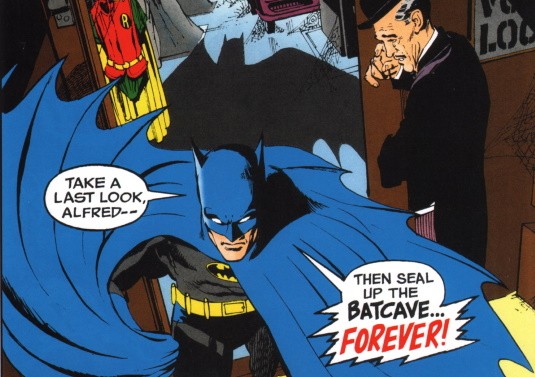As someone who fancies himself as a Batman historian — an amateur Batman historian, let me make that clear — I’m always wanting and willing to learn more about The Dark Knight’s history.
When that happens, I always turn to the definitive Batman historian and expert — and my friend — the great Michael Uslan!
In this case, I found myself in a bit of a debate on who was responsible for returning Batman to his “dark and serious” roots in the comics in the late 1960s. So I asked Mr. U and below you’ll find his latest Batman History Lesson” for BOF. – Bill “Jett” Ramey
The return of Batman to “The Batman” and his dark roots was not an overnight event. In actuality, it was a surprisingly slow evolution.
Neal Adams’ first cover, as I recall, was BATMAN #200. For purposes of this discussion, that cover is irrelevant. Around this time, editor Julie Schwartz and art Director/president Carmine Infantino started making the covers darker. This was not reflected in the interior “Bob Kane” art that was typically ghosted by Chic Stone, Joe Giella, and others.
In BATMAN #204 from August 1968, Irv Novick began drawing the covers and the interior art. Not only had Novick been one of the top war comics artists at DC, but he goes way back and was the artist/co-creator of The Shield for MLJ Comics before there was a Captain America. The primary Schwartz writer became cartoonist Frank Robbins. This was an evolutionary step in the creative process in this transitional era for Batman. Novick is the unsung hero of the re-emergence of the dark Batman. Also, note the logo changing back to a Golden Age/Silver Age Batman with issue #214. The cover of #215 would prove to be symbolic of what was about to take place. Everything was about to get blown up!
The Batman logo changes again in #220, March 1970. It’s a Carmine Infantino/Neal Adams cover and Robbins/Novick story. This is followed by another great tone-setting cover by Neal on #221 with another competent solo Batman tale by Robbins and Novick.
In BATMAN #224, editor Julius Schwartz chose a new writer as Denny O’Neil dipped his toe into the Batman water by scripting his first Batman story, illustrated by Novick and inker Dick Giordano, who also inked Neal Adams’ cover.
BATMAN #227 is an important issue in the transition for two reasons: Neal’s cover, a remake to or homage of the cover of DETECTIVE COMICS #31, sends the loudest, clearest message to date to fans that “The Batman” is back!
And the comic book world — and The Batman — would never be the same again!
So to answer your question, Bill, Julius Schwartz was the architect of The Batman’s “return to darkness” in the 1970s. Neal Adams’ covers would set the new tone and then would artistically define The Batman for a new generation. And Julie’s instincts to team up Denny and Neal were genius! It inspired Denny to create new characters like Ras and Talia and Man-Bat and gave this new creative team the vision and talent together to re-define Two-Face, Catwoman, and even The Joker by BATMAN #251.
BATMAN #237 would give us Danny and Niel’s immortal town, “Night of the Reaper” — my second favorite Batman story of all time. Then came “Christmas story, Denny and Neal’s “Silent Night, Deadly Night.”
So at the top of the food chain here is Julius Schwartz. Under Julie — on an equal level — are Denny O’Neil and Neal Adams. A rung below them is the unsung hero, Irv Novick. And Frank Robbins deserves an honorable mention. – Michael Uslan

